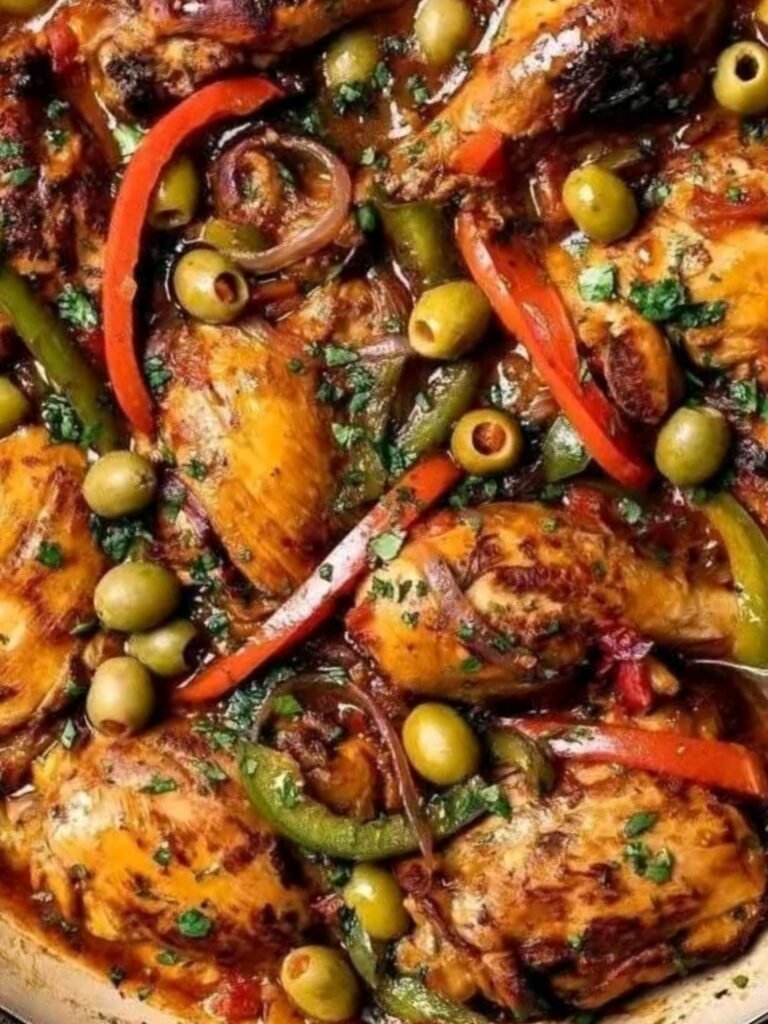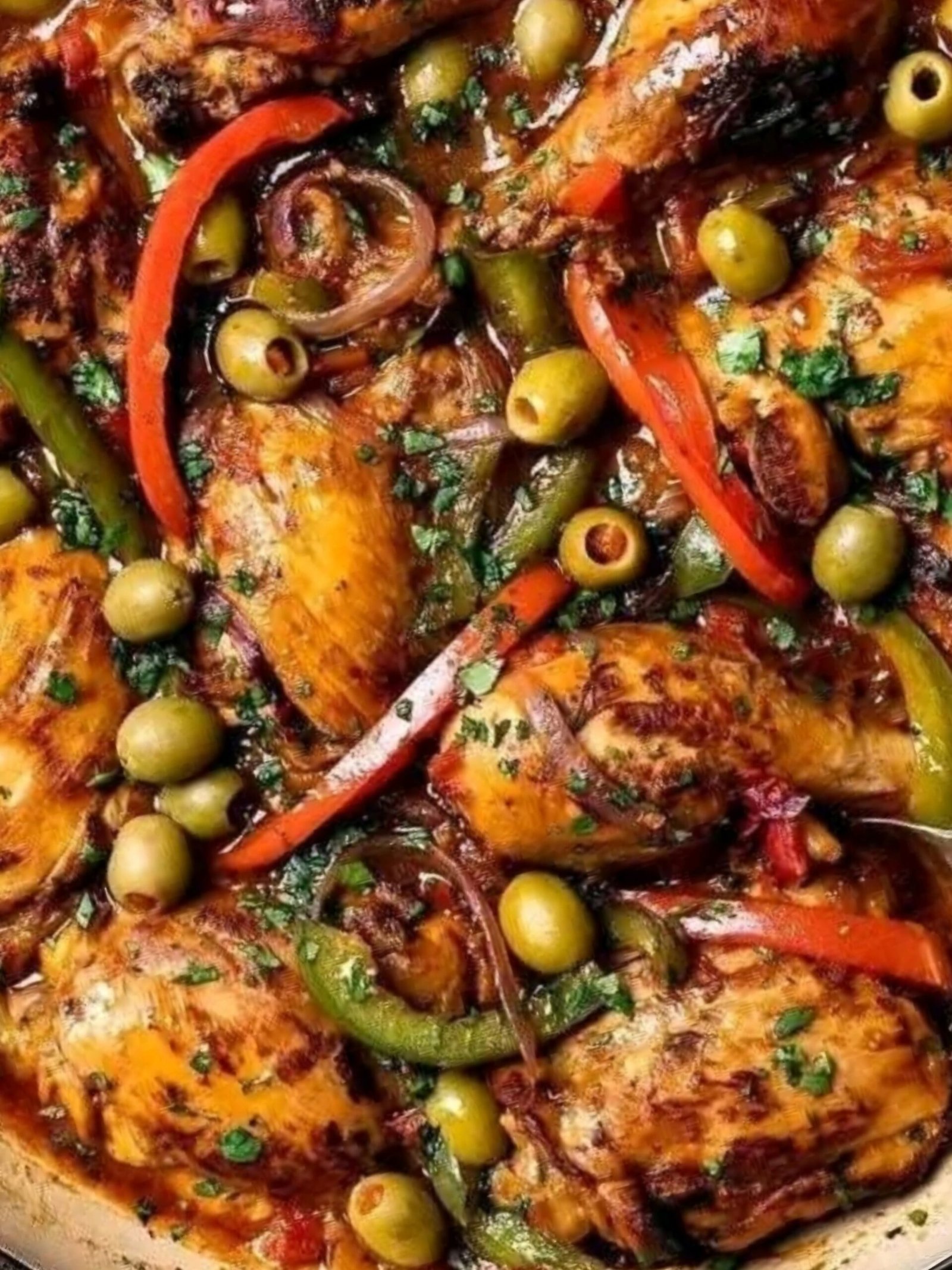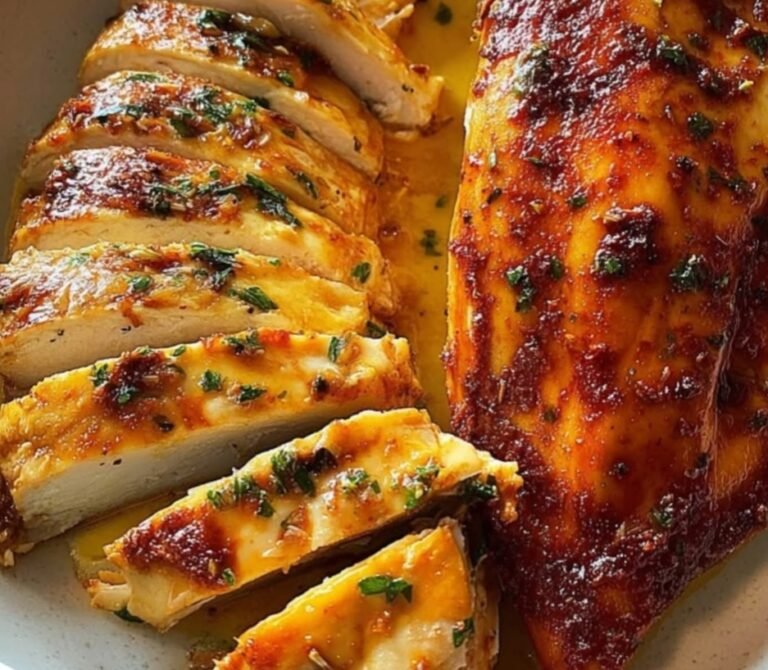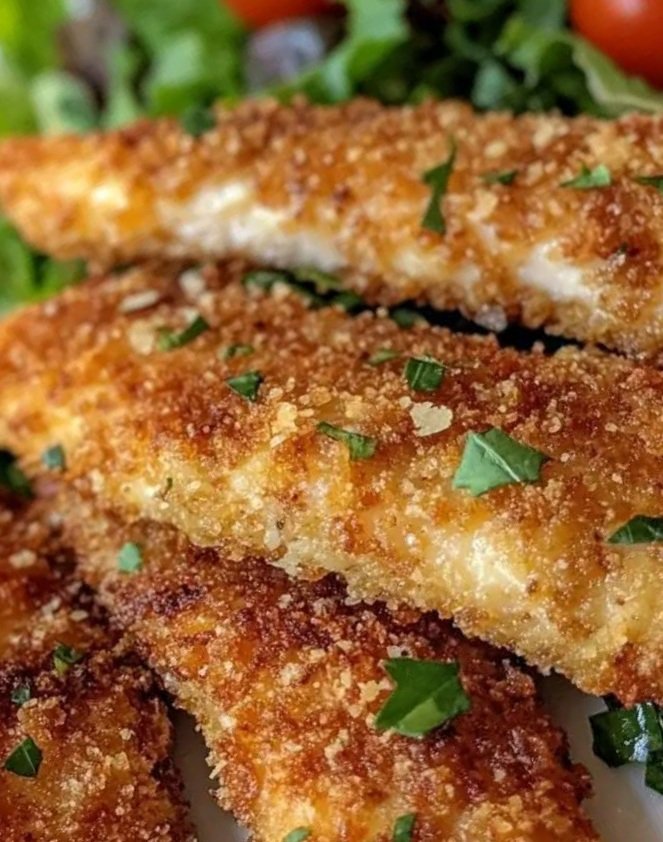Authentic Dominican Pollo Guisado: A Hearty Braised Chicken Recipe

Pollo Guisado, or braised chicken, is a beloved dish in the Dominican Republic, where it holds a special place at family gatherings, weeknight dinners, and festive celebrations. This comforting, flavorful dish features tender chicken simmered in a rich, savory sauce infused with vibrant vegetables, aromatic spices, and a touch of citrus. The result is a soul-warming meal that’s both rustic and deeply satisfying, perfect for sharing with loved ones. In this recipe, we’ll guide you through creating an authentic Dominican Pollo Guisado that’s packed with Caribbean flair and easy to prepare at home.
This version uses bone-in chicken for maximum flavor, colorful bell peppers, and a blend of seasonings that reflect the essence of Dominican cuisine. Whether you’re new to this dish or recreating a childhood favorite, our step-by-step instructions, tips, and serving ideas will ensure your Pollo Guisado is a hit. Let’s dive into this delicious journey!
Ingredients for Dominican Pollo Guisado
This recipe serves 4–6 people and uses simple, accessible ingredients that deliver bold flavors. Feel free to adjust quantities based on your preferences or the size of your crowd.
- 8 bone-in, skin-on chicken pieces (preferably a mix of thighs and drumsticks for juiciness and flavor)
- 1 red bell pepper (or substitute with yellow or orange for a pop of color)
- 1 green bell pepper (or another sweet pepper variety for balance)
- 1 medium red onion (yellow onion works well too)
- 1 lime, freshly juiced (for a bright, tangy kick)
- 3 large garlic cloves, finely grated or minced
- 1 teaspoon dried oregano (a staple in Dominican seasoning)
- 2 teaspoons Sazón seasoning (optional; homemade or store-bought, adds depth—see notes below)
- Kosher salt, to taste
- Freshly ground black pepper, to taste
- 2 tablespoons neutral oil (such as avocado, vegetable, or grapeseed oil)
- 1 teaspoon granulated sugar (optional, to balance flavors)
- 1/2 cup water, divided
- 1 tablespoon tomato paste (for rich, umami flavor)
- 1 teaspoon chicken bouillon powder (optional, for extra savoriness—see notes below)
- Fresh cilantro or parsley (optional, for garnish)
Notes on Ingredients
- Sazón: This is a popular Latin American seasoning blend often used in Dominican cooking. It typically includes ingredients like garlic powder, cumin, coriander, annatto (for color), and salt. You can find it in most grocery stores or make your own by combining these spices. If omitting, increase the oregano and add a pinch of cumin for complexity.
- Chicken Bouillon: This adds a savory boost but can be skipped if you prefer a lighter flavor or want to control sodium. Alternatively, use a splash of chicken broth instead of water for similar results.
- Bell Peppers: Feel free to mix and match colors for a visually appealing dish. Sweet peppers are traditional, but you can add a mild spicy pepper (like cubanelle) for a gentle heat.
- Chicken: Bone-in, skin-on pieces are ideal for flavor and tenderness, but boneless thighs can work if you prefer. Adjust cooking time as boneless cuts cook faster.
Equipment Needed
- Large skillet or Dutch oven with a lid
- Tongs for handling chicken
- Cutting board and sharp knife
- Measuring spoons and cups
- Wooden spoon or spatula
- Small bowl for mixing bouillon (if using)
Instructions for Making Dominican Pollo Guisado
Follow these detailed steps to create a Pollo Guisado that’s bursting with authentic Dominican flavors. The process is straightforward but packed with techniques to maximize taste and texture.
Step 1: Prepare the Ingredients
A little prep goes a long way in making this dish come together smoothly.
- Season the Chicken: Pat the chicken pieces dry with paper towels to ensure a good sear. Place them in a large bowl and season generously with kosher salt, freshly ground black pepper, and dried oregano. If using Sazón and/or chicken bouillon powder, sprinkle them over the chicken and rub the seasonings into the meat for even flavor. Squeeze the juice of one lime over the chicken, toss to coat, and let it sit for 10–15 minutes to absorb the citrusy zing. This step tenderizes the chicken and adds a bright note.
- Chop the Vegetables: While the chicken marinates, dice the red and green bell peppers into bite-sized pieces. Finely chop the red onion for a sweet, aromatic base. Mince or grate the garlic cloves to release their pungent flavor. Set the vegetables aside in separate bowls for easy access during cooking.
Step 2: Sear the Chicken
Searing the chicken creates a golden, crispy skin and locks in juices, setting the foundation for a flavorful dish.
- Heat 2 tablespoons of neutral oil in a large skillet or Dutch oven over medium-high heat. Wait until the oil shimmers (but doesn’t smoke) to ensure it’s hot enough for a good sear.
- Add the chicken pieces, skin-side down, in a single layer, being careful not to overcrowd the pan. Work in batches if necessary. Sear for 5–7 minutes, or until the skin is deeply golden and crisp. Resist the urge to move the chicken too soon—let it develop that beautiful crust! Flip the pieces and cook for another 4–5 minutes on the other side to lightly brown. Transfer the seared chicken to a plate and set aside. Don’t worry if some bits stick to the pan; they’ll add flavor to the sauce.
Step 3: Sauté the Vegetables
The vegetables form the aromatic base of the sauce, infusing it with sweetness and depth.
- In the same skillet, using the flavorful oil and drippings left behind, add the diced red and green bell peppers and red onion. Sauté for 3–5 minutes, stirring occasionally, until the vegetables soften and begin to caramelize slightly. The onions should turn translucent, and the peppers should retain a bit of their vibrant color.
- Add the minced garlic and stir for 1–2 minutes, until fragrant. Be careful not to burn the garlic, as it can turn bitter. The kitchen should now smell amazing with the combination of peppers, onions, and garlic!
Step 4: Build the Flavorful Sauce
This step transforms the dish into a rich, cohesive stew by layering flavors.
- Stir in 1 tablespoon of tomato paste and cook for 1–2 minutes, stirring constantly to blend it with the vegetables. This “toasting” of the tomato paste enhances its umami and slightly sweet notes.
- Pour in 1/4 cup of water and stir, scraping up the delicious browned bits (fond) from the bottom of the pan. These bits are packed with flavor and will enrich the sauce.
- If using chicken bouillon, dissolve 1 teaspoon in the remaining 1/4 cup of water and add it to the pan. Alternatively, use plain water or chicken broth. Stir to combine.
- Add 1 teaspoon of sugar (if using) to balance the acidity of the tomato paste and lime juice. Taste the sauce and adjust with additional salt and pepper as needed. The sauce should be savory, slightly tangy, and well-rounded.
Step 5: Braise the Chicken
Braising allows the chicken to become tender and absorb the sauce’s flavors.
- Nestle the seared chicken pieces back into the skillet, along with any juices that collected on the plate. Spoon some of the sauce and vegetables over the chicken to coat it.
- Reduce the heat to low, cover the skillet with a lid, and simmer gently for 25–35 minutes, or until the chicken is cooked through and tender. The internal temperature of the chicken should reach 165°F (74°C) for safety. Check occasionally to ensure the sauce isn’t sticking; add a splash of water if it thickens too much.
- Halfway through cooking, gently stir or turn the chicken pieces to ensure even cooking and flavor absorption. The sauce should thicken slightly and cling to the chicken.
Step 6: Final Touches and Serving
Once the chicken is tender, it’s time to finish the dish and bring it to the table.
- Taste the sauce and adjust seasoning with more salt, pepper, or a squeeze of lime juice for extra brightness.
- If desired, garnish with freshly chopped cilantro or parsley for a burst of color and freshness.
- Serve the Pollo Guisado hot, spooning the rich sauce and vegetables over the chicken. Pair it with traditional Dominican sides like white rice, tostones (fried green plantains), or habichuelas guisadas (stewed red beans). A side of sliced avocado or a simple green salad also complements the dish beautifully.
Tips for the Best Pollo Guisado
- Marinate Longer for Extra Flavor: If time allows, let the chicken marinate in the lime juice and seasonings for up to an hour in the fridge. This deepens the flavor and tenderizes the meat.
- Control the Heat: Keep the braising temperature low to prevent the chicken from drying out and to allow the flavors to meld.
- Make It Your Own: Add other vegetables like carrots, celery, or potatoes for a heartier stew. For a touch of heat, include a small Scotch bonnet pepper (pierced, not chopped) during simmering, removing it before serving.
- Double the Recipe: Pollo Guisado tastes even better the next day as the flavors meld. Make a larger batch for leftovers or to feed a crowd.
- Skim Excess Fat: If the sauce is too oily from the chicken skin, skim off excess fat with a spoon before serving for a lighter dish.
Cultural Context: Why Pollo Guisado Is Special
Pollo Guisado is more than just a meal in the Dominican Republic—it’s a symbol of home, family, and tradition. This dish is often prepared in large quantities to feed extended families, reflecting the Dominican value of togetherness. Its vibrant ingredients, like bell peppers and lime, showcase the island’s agricultural bounty and African, Spanish, and Taíno culinary influences. Whether served at a casual lunch or a holiday feast, Pollo Guisado brings people together with its comforting, familiar flavors.
In Dominican households, recipes for Pollo Guisado vary from family to family, with each cook adding their own twist—perhaps a secret spice blend or an extra splash of citrus. This recipe captures the classic elements while leaving room for your personal touch, inviting you to create your own tradition.
Storage and Reheating
- Storage: Store leftovers in an airtight container in the refrigerator for up to 3–4 days. The flavors will continue to develop, making it even tastier!
- Freezing: Pollo Guisado freezes well. Place cooled leftovers in a freezer-safe container or bag and freeze for up to 3 months. Thaw overnight in the fridge before reheating.
- Reheating: Warm the dish gently on the stovetop over low heat, adding a splash of water or broth to loosen the sauce. Alternatively, microwave in a covered dish, stirring occasionally, until heated through.
Serving Suggestions
To create a true Dominican-inspired meal, consider these pairings:
- Arroz Blanco: Fluffy white rice is the perfect vehicle for soaking up the flavorful sauce.
- Tostones or Maduros: Crispy fried green plantains (tostones) or sweet ripe plantains (maduros) add texture and sweetness.
- Habichuelas Guisadas: Stewed red beans in a savory sauce are a classic side.
- Ensalada Verde: A simple salad of lettuce, tomatoes, cucumbers, and red onion with a lime vinaigrette balances the richness.
- Beverages: Pair with a refreshing morir soñando (a Dominican orange and milk drink), passion fruit juice, or a cold Presidente beer.
Nutritional Information (Approximate, Per Serving)
- Calories: 350–400 kcal (varies based on chicken cut and portion size)
- Protein: 25–30g
- Fat: 20–25g
- Carbohydrates: 5–8g
- Sodium: Varies based on salt and bouillon usage
For precise values, calculate based on your specific ingredients and portion sizes.
Frequently Asked Questions
Can I use boneless chicken?
Yes, boneless thighs or breasts work, but reduce the braising time to 15–20 minutes to avoid overcooking. Bone-in pieces yield more flavor, though.
Is Pollo Guisado spicy?
This recipe is not spicy, focusing on savory and tangy flavors. For heat, add a mild chili or a dash of hot sauce.
Can I make it in a slow cooker?
Absolutely! Sear the chicken and sauté the vegetables as directed, then transfer everything to a slow cooker. Cook on low for 4–6 hours or high for 2–3 hours.
What if I don’t have Sazón?
Make a substitute by mixing 1/2 teaspoon each of ground cumin, garlic powder, and paprika with a pinch of salt. It won’t be identical color but will add similar flavor.
Conclusion
Dominican Pollo Guisado is a dish that nourishes both body and heart, bringing the vibrant spirit of the Caribbean to your kitchen. With its tender chicken, colorful vegetables, and rich, aromatic sauce, it’s a recipe that’s sure to become a staple in your home. Whether you’re cooking for a cozy dinner or a festive gathering, this dish delivers comfort and flavor in every bite. Try it today, and share your creations with us on social media—we can’t wait to see your take on this Dominican classic!






